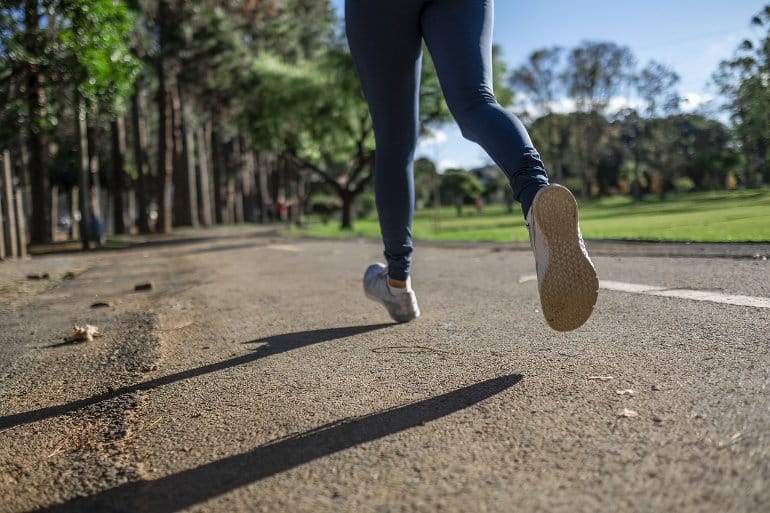Summary: For people with arthritis, exercise reduces pain and lowers levels of inflammatory cytokines. Exercise also increases the production of natural endocannabinoids. Researchers found the way exercise promotes these changes was due to altered gut microbes.
Source: University of Nottingham
Exercise increases the body’s own cannabis-like substances, which in turn helps reduce inflammation and could potentially help treat certain conditions such as arthritis, cancer and heart disease.
In a new study, published in Gut Microbes, experts from the University of Nottingham found that exercise intervention in people with arthritis, did not just reduce their pain, but it also lowered the levels of inflammatory substances (called cytokines). It also increased levels of cannabis-like substances produced by their own bodies, called endocannabinoids. Interestingly, the way exercise resulted in these changes was by altering the gut microbes.
Exercise is known to decrease chronic inflammation, which in turn causes many diseases including cancer, arthritis and heart disease, but little is known as to how it reduces inflammation.
A group of scientists, led by Professor Ana Valdes from the School of Medicine at the University, tested 78 people with arthritis. Thirty-eight of them carried out 15 minutes of muscle strengthening exercises every day for six weeks, and 40 did nothing.
At the end of the study, participants who did the exercise intervention had not only reduced their pain, but they also had more microbes in their guts of the kind that produce anti-inflammatory substances, lower levels of cytokines and higher levels of endocannabinoids.

The increase in endocannabinoids was strongly linked to changes in the gut microbes and anti-inflammatory substances produced by gut microbes called SCFAS. In fact, at least one third of the anti-inflammatory effects of the gut microbiome was due to the increase in endocannabinoids.
Doctor Amrita Vijay, a Research Fellow in the School of Medicine and first author of the paper, said: “Our study clearly shows that exercise increases the body’s own cannabis-type substances. Which can have a positive impact on many conditions.
“As interest in cannabidiol oil and other supplements increases, it is important to know that simple lifestyle interventions like exercise can modulate endocannabinoid.”
About this exercise and inflammation research news
Author: Press Office
Source: University of Nottingham
Contact: Press Office – University of Nottingham
Image: The image is in the public domain
Original Research: Closed access.
“The anti-inflammatory effect of bacterial short chain fatty acids is partially mediated by endocannabinoids” by Amrita Vijay et al. Gut Microbes
Abstract
The anti-inflammatory effect of bacterial short chain fatty acids is partially mediated by endocannabinoid
The endocannabinoid (EC) system has pleiotropic functions in the body. It plays a key role in energy homeostasis and the development of metabolic disorders being a mediator in the relationship between the gut microbiota and host metabolism. In the current study we explore the functional interactions between the endocannabinoid system and the gut microbiome in modulating inflammatory markers.
Using data from a 6 week exercise intervention (treatment n = 38 control n = 40) and a cross sectional validation cohort (n = 35), we measured the associations of 2-arachidonoylglycerol (2-AG), anandamide (AEA), N-oleoylethanolamine (OEA) and N-palmitoylethanolamine (PEA) with gut microbiome composition, gut derived metabolites (SCFAs) and inflammatory markers both cross-sectionally and longitudinally.
At baseline AEA and OEA were positively associated with alpha diversity (β(SE) = .32 (.06), P = .002; .44 (.04), P < .001) and with SCFA producing bacteria such as Bifidobacterium (2-AG β(SE) = .21 (.10), P < .01; PEA β(SE) = .23 (.08), P < .01), Coprococcus 3 and Faecalibacterium (PEA β(SE) = .29 (.11), P = .01; .25 (.09), P < .01) and negatively associated with Collinsella (AEA β(SE) = −.31 (.12), P = .004).
Additionally, we found AEA to be positively associated with SCFA Butyrate (β(SE) = .34 (.15), P = .01). AEA, OEA and PEA all increased significantly with the exercise intervention but remained constant in the control group. Changes in AEA correlated with SCFA butyrate and increases in AEA and PEA correlated with decreases in TNF-ɑ and IL-6 statistically mediating one third of the effect of SCFAs on these cytokines.
Our data show that the anti-inflammatory effects of SCFAs are partly mediated by the EC system suggesting that there may be other pathways involved in the modulation of the immune system via the gut microbiome.






